We have only been here for one week but keep meeting the same people when shopping in the village or going to the festival. Giving that the island has only 3.600 residents, this is not a surprise. A lot more horses, not less than 5.000 of them, roam the streets and every bit of the countryside.
The local population has the typical Polynesian look and is extremely attractive. The men are rather tall and grow their hair long which then is either tied into a ponytail or a bun high up on the head, often decorated with feathers. The fame of the beautiful and graceful women has long ago reached the rest of the world and yes, they do walk the streets with a Hibiscus flower behind their ear! So while this typical stereotype of Polynesians seems to be true, one cannot avoid to see that specially people past their thirties look very well-fed, occasionally also children. Women have quite a few children and they start doing so very young.
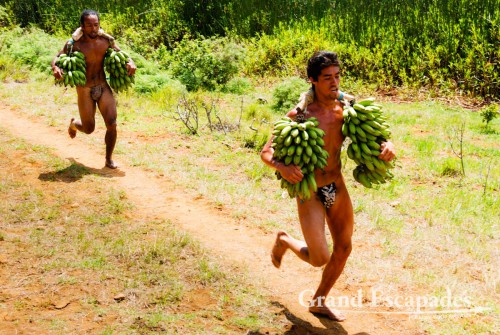
Tapati Rapa Nui, Tau’a (kind of Triathlon that is held inside the crater of volcano Ranu Raraku), Rapa Nui or Easter Island, Pacific
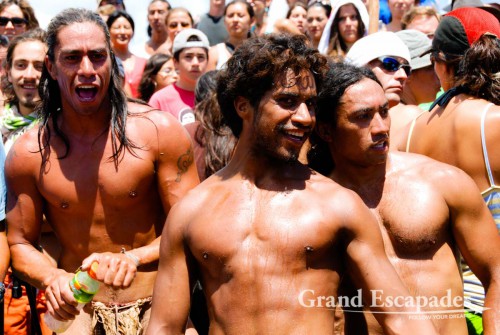
Tapati Rapa Nui, Tau’a (kind of Triathlon that is held inside the crater of volcano Ranu Raraku), Rapa Nui or Easter Island, Pacific
All the residents of the island are bilingual and Rapa Nui is widely spoken. It seems to depend on the social background of the family to what extent. Few islanders speak good English, maybe because tourism is a rather new phenomenon.
The further development of tourism in Rapa Nui is determined by how many planes are heading towards the island. Until a few years ago, it was only a few planes per weeks during the high season and even less in the winter. Presently it is eight from Santiago de Chile and two from Papeete per week, with Lan Chile being the only carrier.
More and more cruise ships include Rapa Nui in their itinerary and park way outside the small harbor. From there, they ship their huge human cargo onto the island to see the famous Moai of Anakena, while enjoying a picnic at this out-of-the-world beach. During our stay it was the Queen Elisabeth with 1.800 passengers following this itinerary. Something in this dimension had never happened here. We were said that it is the first time that such a big cruise boat comes here, also apparently her last cruise before “retirement”.
Also big companies discover the island and make it the destination for incentive trips. We saw a huge jet of Abercombie & Kent, a Boeing 757, at the airport. The guests stayed here for 36 hours and were invited to see the festival. This is a new phenomenon for islanders who quickly adapt to these new trends.
For the time being, the impact of tourism seems relatively limited, even though talking to people who were there in the past, things are changing quickly: there are more and more cars; last year no mobiles could be seen, today a common sight…
The question is how long will the Easter Islands remain such genuine place and Tapati Rapa Nui such a genuine event? We have heard that next years festival may not be free of charge anymore. Also, how long will it be possible to pose with the athlete competing after the Triathlon or the Banana trunk race? Just as the Carnival in Gualayguachu, we are just lucky to have seen it so “unspoiled”!

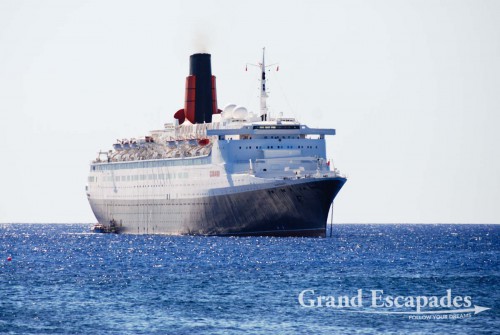
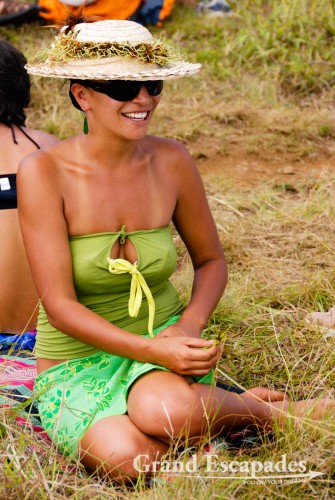
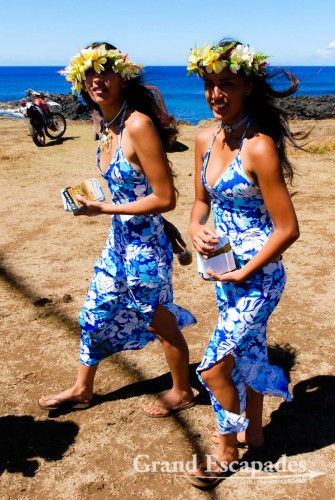
No comments yet.